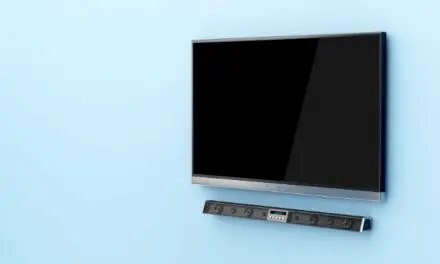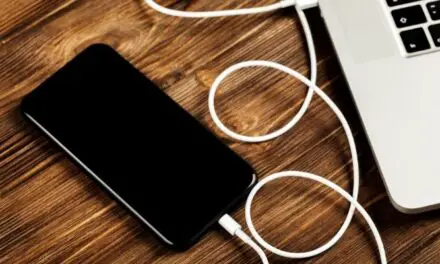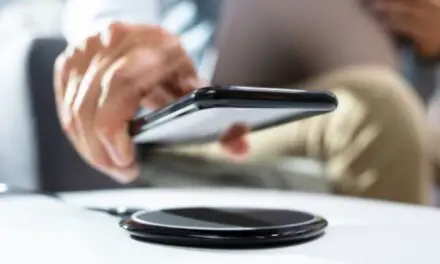Some headphone enthusiasts, whether they prefer wireless earbuds, over-the-ear headphones, or something in between, believe that the louder the volume in a pair of headphones, the greater the danger of damaging them.
They think it’s a myth and they support their assumption by pointing to the fact that headphones are designed so that the signal strength it has to reach to cause damage is higher than the distortion point of the headphones.
In other words, the headphones will break your ears long before they’ll break themselves.
But that’s a little disingenuous since it doesn’t account for those who may raise their volume to well above the point where distortion is present.
So can turning the volume way up actually break your headphones?
Table of Contents
Can Headphones Break If Too Loud?

Yes, headphones can break if they are played too loud. The concept is the same as blowing out a standard speaker, especially if increased bass is a contributing factor. The loudness of the volume can potentially damage the cones while the bass might damage the drivers.
Under regular usage, you shouldn’t stress the drivers out enough to do damage. However, if you were to drive your headphones with an amplifier and push some serious power through them. In that case, it could cause the amplifier to start clipping (when more power is needed than what your amplifier can deliver).
A clipped signal can potentially damage your headphones. Clipping distorts sound waves and that distortion is something that can blow headphones.
But whether the bass does the damage or the volume itself, it will eventually damage the headphones, period. Sounds are not innocuous. Sound is an effective wave that can be used for destruction. Not only can it cause harm, but it has also been tested time and time again as a potential military weapon because of its potential to harm or destroy.
So, you should never assume that a pair of good drivers are up to the task, regardless of the volume of your headphones.
Sound can be much like water, soft and unimpressive as it slowly but surely tears down even the strongest of stone.
What Happens if You Play Headphones Too Loud?
Two things can happen if you play headphones too loud. You can physically damage your headphones and you can damage your hearing. Damage to your hearing is potentially permanent and should be the primary concern over whether or not you damage your headphones.
Some headphones have a built-in limiter, which will keep you from turning them up to the point where it will cause damage to the headphones but not necessarily to the point where it will cause damage to your hearing.
Anything at or above 110dB for longer than 30 minutes can create permanent hearing loss. The higher the decibels, the shorter the listening time. As far as the headphones are concerned, it’s a matter of what is turned up and what components it can do damage to.
Too much bass will do damage to the drivers and the transducers. Loud vocals will do damage to the voice coil (since vocals are usually the loudest in terms of decibels) in your headphones, and the rest will cause damage to the coils. The transducers usually go first, which is why you will start to hear distortions, like crackling noises, instead of the deep thrum of the bass.
Playing your headphones too loud can lead to a number of issues, including:
- Damaged Circuitry
- Overheating
- Headphones can even catch fire
- Damaged voice coil
- The driver will become detached from the inner casing
- Ruptured diaphragm
- Damaged cones
- Damaged transducers
When these components are damaged, they do not recover and you cannot replace the components in a pair of headphones. Your only alternative is to purchase brand-new headphones.
How Loud Is Too Loud For Headphones?
Everybody has their own opinion on these things. The World Health Organization recommends 85dB and no higher. Of course, 85dB is not going to damage your headphones. WHO’s suggestion is pointed towards your safety, not the safety of your headphones, after all.
The other caveat here is that no one really talks about how loud is too loud for headphones because all headphones are different. Some have components that are highly resilient and cheap, Dollar General knock-offs do not.
The entire warning section of the music industry, where headphones are concerned, is targeted at hearing safety, not what it will take to blow the drivers straight through the ear holes.
“Too loud” for headphones is entirely dependent on the headphones themselves. Many of your cheaper headphones will experience distortion at low decibels, which shouldn’t surprise anyone who spends more money on a Slurpee at Tom Thumb than on a pair of headphones.
Some headphones are designed far better, with higher resistance to extreme decibels or a built-in limiter that keeps the decibels from getting high enough to cause internal damage. It’s difficult to damage your headphones with the volume. After all, they are designed to go that high, but it is possible.
Related Article: 7 Great Reasons To Use A Headphone Stand
Can Too Much Bass Break Headphones?
Too much bass can break headphones. It causes the headphone drivers to have to work more to reproduce the high levels of heavy base, generally giving them a shorter lifespan.
Too much bass may also cause damage and break headphones through the intensity of the vibrations. It’s difficult to do. Headphones and the associated apps and smartphones that we use them with are pretty limited on how high you can crank that bass.
Over time though, all it takes is the tiniest crack and it will eventually spread. A high bass can potentially tear the drivers off of the inner casing and it can also damage the cones. Either of which or both would make the headphones worthless.
If you have wireless, over-the-ear headphones you may be able to play horseshoes with them but listening would be a distorted, chaotic mess if the drivers came off and the cones were damaged. That’s assuming they would function at all.
However, it’s a slow process most of the time. Only headphones that were made on a Friday with most of the assembly line snoozing, waiting for the weekend, would break apart at the first note of excessive bass.
The problem is, once the damage begins, the quality of what you are listening to would drop off exponentially.
This is especially true if you are taking advantage of spatial and lossless audio. The difference would be noticed immediately, even if you could go on wearing the headphones for a while.
How Can I Tell If My Headphones Are Damaged?
Your headphones are probably fine if you don’t hear a rattle, loss of volume, or any channel imbalance.
But depending on how quickly things come apart or how small the catalyst is, you will notice a few things from the very start.
- A slight, distant buzzing
- A quieter sound overall, even when you crank the volume up
- Static sounds that grow louder over time
- Rattling
All of these are indications of the driver, though they could be caused by damage to other components within the headphones. If you slightly damage the driver in one ear, you will be able to notice because of the volume difference in each ear, when you remove one or the other side from your ear.
The buzzing sound that you often hear as one of the drivers is going out may actually be nothing more than an accumulation of dust or earwax in the earpiece. If you clean your headphones thoroughly, that will eliminate that kind of distraction.
If it buzzes after cleaning, you may have a problem. Static issues may be another false alarm, especially if you are using wireless headphones, regardless of the type. If you could see, just for five seconds, all of the signal waves passing through you and around you, you would probably have to spend time in an institution to calm you down.
Those signals are all over the place and sometimes they are more than enough to cause static interference when there is actually no damage to your headphones. So it’s difficult to tell, even though damaged headphones can certainly emit a static background noise themselves.
The rattling we mentioned is a physical sound that you hear from the headsets and it usually means that your driver in one of the ear pieces has either come completely loose or is hanging by a thread.
Of course, as soon as you put the headphones on and press play, you will know for sure.
It also wouldn’t hurt to try out the ultimate headphones test online to see how yours fare.
What Can I Do If My Headphones Are Damaged From Playing Them Too Loud?
What you can do if your headphones are damaged depends on the specific headphones you have but, for the most part, you’re simply going to have to get a new pair. Repairing them yourself is out of the question because even if you had the tools laying around, it’s going to be difficult to find the tiny driver for a pair of Beats Studio Buds.
There may be some instances where you can do such a thing but it’s not likely. You could also consider having them professionally repaired, which is a really good idea if they are under warranty but not so much if they’re not.
Even if they can be repaired the cost will make you just want to go out and buy a new pair instead. It’s a really good idea to buy a new pair if they’re cheap headphones but if they are Apple AirPods, it may be worth your time and money to send them in, especially if you pay for Apple Care.
Earbuds under warranty are a no-brainer, especially if you dropped a ton of money on them. The only thing that you might potentially run into is having the warranty voided because you cranked the volume so loud that the driver exploded.
All Things Considered
It’s never going to be easy to damage your headphones with the volume cranked up too loud. However, it can be done, especially if they’re cheap headphones and the inner components are not high quality.
If you really feel like you need to crack your eardrums, consider going with a premium device and do yourself a favor—don’t listen at high levels for long.



